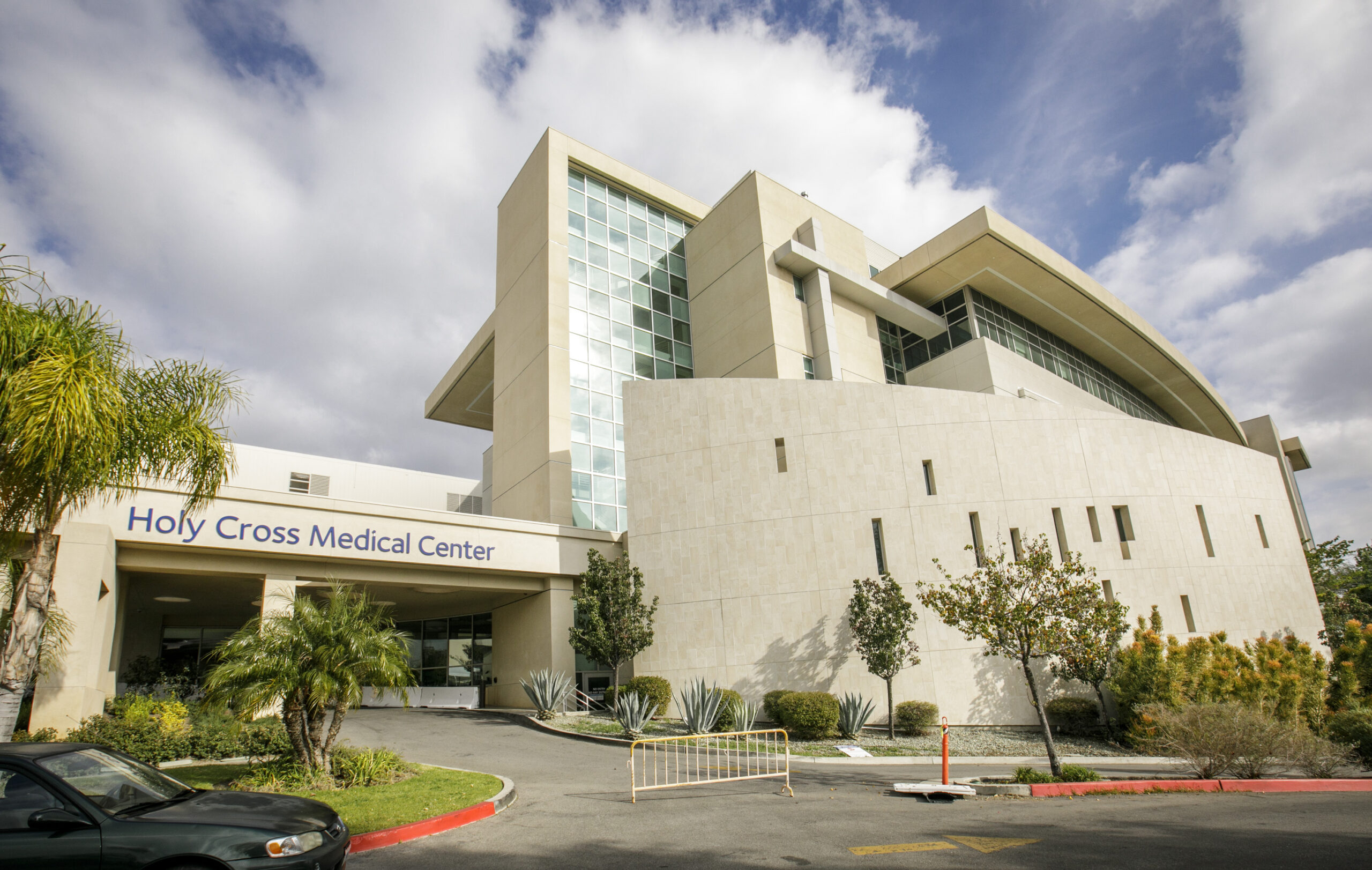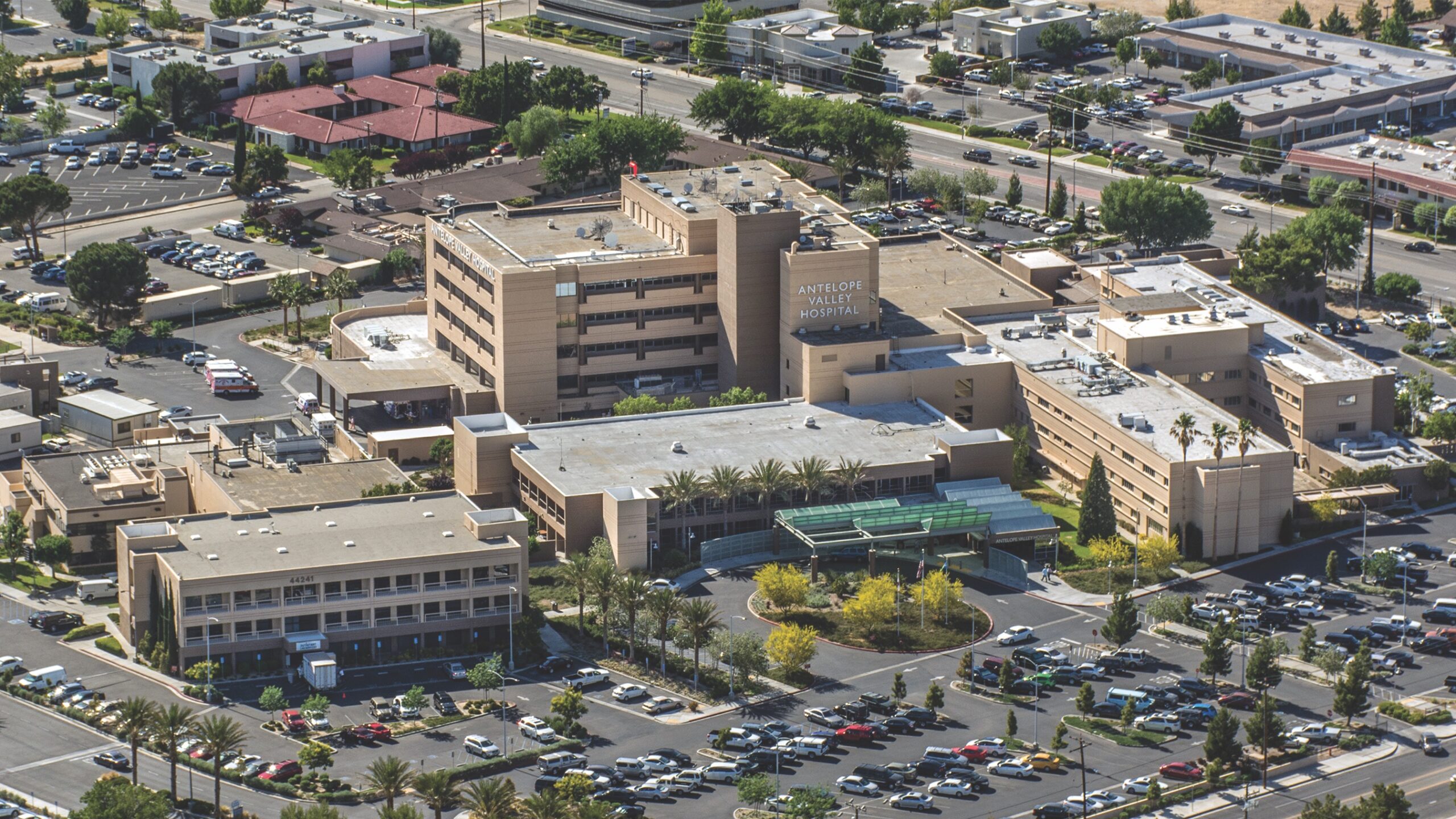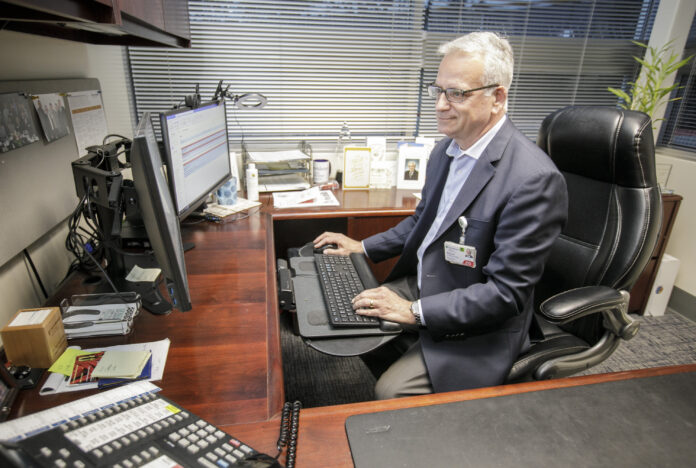This was supposed to be the year that hospitals in the San Fernando Valley and throughout Los Angeles County were going to begin steadying their finances after years of tumult and unexpected costs and strains brought on by the Covid-19 pandemic.
But it hasn’t turned out that way. Indeed, many hospitals are in worse financial shape now than they were at the height of the pandemic three years ago. Soaring costs – chiefly for contract “travel nurses” and prescription drug procurement – have continued to plague hospitals, while government program reimbursement rates for most of the treatment hospitals provide have not kept pace.
The result has been a worsening squeeze on operating margins for hospitals in the San Fernando Valley, Los Angeles County and statewide. And, unlike three years ago, when the federal government stepped in through the CARES Act to offset much of the Covid treatment and personal protective equipment procurement costs incurred by hospitals, the government cavalry has not ridden to the rescue.
“This has turned out to be the most challenging year financially in recent memory for our hospital and hospitals throughout the region,” said Bernie Klein, chief executive of Providence Holy Cross Medical Center in Mission Hills, who has also emerged as the chief spokesman for 13 of Renton, Washington-based Providence Health and Services hospitals in Southern California.
Besides Holy Cross Medical Center, Providence also operates Saint Joseph Medical Center in Burbank and jointly operates with Cedars-Sinai Health System the Tarzana Medical Center.
Klein said the situation is exacerbated because hospitals locally and throughout the state already sustained record operating losses in 2021 and 2022, forcing many to tap reserves.
Mounting losses

Indeed, a new report commissioned by the California Hospital Association, a Sacramento-based trade and advocacy organization, laid out an increasingly bleak picture, citing rapidly escalating costs and Medicare and Medi-Cal reimbursement rates that have failed to keep pace. Most hospitals in the state rely on these government programs for a majority of treatment payment revenue.
The report, prepared by consultant Kaufman Hall & Associates and released last month, showed that 52% of the state’s roughly 400 hospitals now have negative operating margins, nearly double the 28% for 2019. Another 18% have operating margins between 0% and 3%, considered dangerously low with no ability to set funds aside for reserves or future emergency situations.
What’s more, the report said, nearly 20% of the state’s hospitals are considered “at risk of closure.” The hospitals association said one hospital has already closed in the state – Madrera Hospital near Fresno – – and others could follow as soon as this year.
Locally, El Segundo-based Pipeline Health, went into bankruptcy last fall and re-emerged in January after restructuring its debts and selling off two of its seven hospitals.
And on April 19, Beverly Hospital in Montebello filed for Chapter 11 bankruptcy protection after failing to secure a buyer or affiliation partner.
Officials with the 202 licensed-bed hospital said they had lined up $13 million in financing to keep the hospital open as they continue to pursue a deal with either a buyer or an affiliation partner.
The overall financial condition of hospitals statewide has become so dire that the hospital association is now calling for a $1.5 billion bailout from the state.
“The clock is ticking each and every day as more and more hospitals in this state are taking the next step toward the edge of survivability,” Carmela Coyle, the association’s chief executive, said in a press conference called last month to put pressure on lawmakers to step in.
SFV hospitals worse off

The hospital association report did not break out figures for the roughly 95 hospitals in Los Angeles County.
But according to the Los Angeles Business Journal’s list of the 75 largest hospitals in the county as ranked by net patient revenue, 47 – or 63% – of the hospitals had negative operating margins last year, meaning they lost money. That’s double the number – 23 – from 2019.
For the 21 hospitals on the San Fernando Valley Business Journal’s list, six hospitals posted negative operating margins in 2019. That number nearly tripled to 16 in 2022, meaning a whopping 76% of those 21 hospitals lost money last year.
California Hospital Association spokesman David Simon said he is not surprised that the situation in Los Angeles County as a whole, and the San Fernando Valley region specifically, is more acute than in the rest of the state. He said that’s because hospitals in Los Angeles County tend to have a higher proportion of patients covered by Medi-Cal – the state’s Medicaid program covering indigent patients – than the statewide average. That in turn would mean that the gap between revenue and costs would be somewhat larger for hospitals within the county than hospitals in other counties.
Soaring costs
One of the main cost drivers cited in the report is hospitals’ reliance on so-called contract “travel nurses,” who command pay rates substantially higher than the average union-scale staff nurses, to fill vacancies left by nurses who have left due to burnout.
Collectively, the state’s hospitals paid out $3.8 billion more for contract labor than in 2019, according to the report. That represents an increase of 263%, with the bulk of that increase coming between 2021 and 2022.
“Our high volume has driven the need to use temporary nursing labor, which is very expensive,” said Elaine Batchlor, chief executive of Martin Luther King Community Hospital in Willowbrook.
Given the low-income community it serves, almost all of the hospital’s patients are on government programs – Medicare or Medi-Cal.
“Our public (government) payments are pennies on the dollar and haven’t been growing anywhere near as fast as these costs,” Batchlor added.
To try to make ends meet, Batchlor said her hospital has had to tap its reserves and has continued to borrow to cover costs.
“We can’t keep doing this indefinitely,” she said.
Over the longer term, Batchlor said her hospital may have to start cutting services, such as maternal labor and delivery care or a recently opened wound care center.
“This will have a substantial impact on the community we serve,” Batchlor said.
Nurses are not the only essential hospital staff in short supply. Providence Holy Cross chief executive Klein said that over the last year or so shortages of physicians and radiologists have become more frequent.
Klein said that with the rise of telemedicine, radiologists prefer to read and interpret X-ray, CT-scan and other images at home.
“But there are procedures that must be done in the hospital setting, especially fluoroscopies, where contrast dyes must be injected into the patient’s bloodstream just prior to the test,” Klein said. “And with so many radiologists now working from home, it’s sometimes hard to find enough of them at the hospital to conduct these procedures.”
And that means hospital administrators have to pay out even more money to entice radiologists back into the hospital setting.
Klein added that on the revenue side, roughly one-third of Providence Holy Cross’ patients are on Medi-Cal, which he called “one of the worst payors in terms of reimbursement rates.”
The situation is even worse at Antelope Valley Medical Center in Lancaster, where Chief Executive Edward Mirzabegian said 80% of his hospital’s patients are on government programs.
“Things are getting much worse now,” Mirzabegian said. “Government payors and insurance companies are paying under the cost assumptions of five or 10 years ago and costs have soared since then. Everything costs three times as much or even five times as much now. Every hospital, including ours, is in a jam.”
Hospital bankruptcies

Of course, this imbalance between government medical program reimbursement rates and rising treatment costs is nothing new, particularly for hospitals such as Martin Luther King Jr. Community Hospital that are heavily or entirely reliant on government programs for treatment reimbursements. These hospitals have long been referred to as “safety net hospitals” and have long been known for their relatively precarious financial position.
“Safety-net hospitals are always on razor’s edge for profitability,” said Craig Beam, an independent hospital consultant in Cowan Heights in Orange County who has held several board positions at hospitals and managed-care organizations.
Fifteen years ago, the state attempted to come up with a fix for this problem: hospitals with a lower proportion of patients on these government programs – the “richer” hospitals – would pay into a fund to help subsidize the poorer safety net hospitals.
The establishment of that fund spurred the early growth of Pipeline Health. But over time, the fund subsidies couldn’t offset the continued low government program reimbursement rates. In 2013, Pipeline Health completed a sale-leaseback of its four hospital properties that netted $86 million in cash.
When the pandemic hit, Pipeline, like most hospital systems, was slammed hard by higher patient treatment costs, skyrocketing ventilator and personal protective equipment expenses and other costs. The 2020 CARES Act funds helped for a short while, but by 2021, Pipeline was forced to turn to a second sale-leaseback of its properties.
To raise more revenue in an attempt to stem the red ink, Pipeline also tried to sell two Chicago-area hospitals it had recently acquired, but that sale process hit unexpected regulatory roadblocks and took much longer than expected.
Pipeline could no longer remain solvent without that additional revenue and was forced to file for bankruptcy in October.
Eventually, Pipeline completed the sale of the two Illinois hospitals; that, along with some other internal debt restructuring made possible by the bankruptcy filing, allowed for a quick exit from bankruptcy in January.
Meanwhile, at Beverly Hospital, more than 90% of patients are on government programs – chiefly Medi-Cal and Medicare.
In a statement issued in conjunction with the bankruptcy filing, hospital executives said, “Today’s filing was precipitated by the financial stresses that safety net hospitals across the United States now face: a meteoric rise in labor costs caused in part by the nationwide labor shortage post-Covid crisis coupled with egregious inflation in the price of medical supplies and medications – while Medicare and Medicaid base rates and payments have failed to adjust to absorb such increases.”
The statement also noted hospital executives tried unsuccessfully to affiliate or merge with three separate hospital systems in an attempt to obtain help shouldering the costs.
Cost-cutting steps
With the Pipeline Health and Beverly Hospital bankruptcy filings fresh on their minds, other local hospital executives are taking whatever steps they can to avoid a similar fate.
At Ontario-based Prime Healthcare Inc., which operates five hospitals in Los Angeles County – including Sherman Oaks Hospital and Encino Hospital Medical Center – Chief Financial Officer Steve Aleman said the hospital system started to address the nurse staffing situation late last year. As the worst of the pandemic patient surges appeared to be ending, Prime Healthcare created a task force to try to better manage staffing needs.
“That’s not necessarily less staff, but making sure the staff you have is in the right places,” Aleman said. “And in some cases, it means staffing up so you can convert high-cost temporary positions – such as contract nurses – into lower cost full-time ones.”
Aleman said he expects the results of this staff-management initiative to start showing up in Prime’s financials later this year.
And at Providence Holy Cross Medical Center in Mission Hills, chief executive Klein said Providence is considering consolidating some services.
“With our three hospitals in the San Fernando Valley in relatively close proximity, does it make sense for us to offer every service at each hospital?” he said. “Or does it make more sense to concentrate bariatric surgery at one of the hospitals, pediatric care at another and trauma care at the third?”
But Antelope Valley Medical Center in Lancaster doesn’t have that luxury, and chief executive Mirzabegian is considering more drastic steps.
He said he has been forced to tap hospital reserves, but that can only go on for another year or two.
“We’re now canceling our existing managed-care contracts and renegotiating them for higher reimbursements,” he said. We have a 90-day window to reach new agreements or the payors lose their discounts.”
Acute situation
But Mirzabegian said what’s really needed is an overhaul of the state’s Medi-Cal program. “If they don’t revamp the Medi-Cal program so it pays rates more in line with costs, most hospitals will not be able to survive,” he said.
The Hospital Association’s Coyle agreed.
“The fundamental problem here is systemic,” she said. “It is driven by the underfunding of government payor programs. The only sustainable fix is an increase in the reimbursements.”
However, she said, that will take time.
And the situation is so acute that an immediate infusion of $1.5 billion is necessary for the safety net hospitals facing the most acute financial situations.
But getting that $1.5 billion in a fiscal year in which the state will face a projected budget shortfall of at least $20 billion will not be easy.
“That’s why we’re letting people know now that if that money doesn’t come, we will see more hospitals close and more communities go without the health care services they need,” Coyle said.
